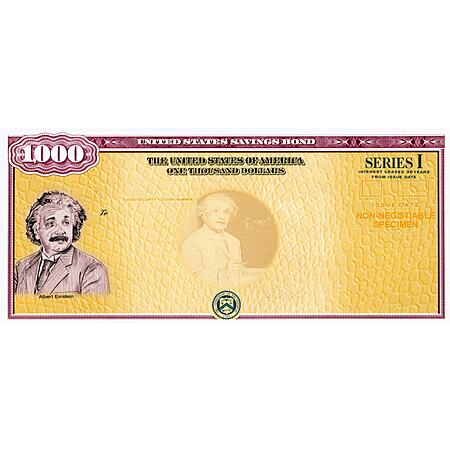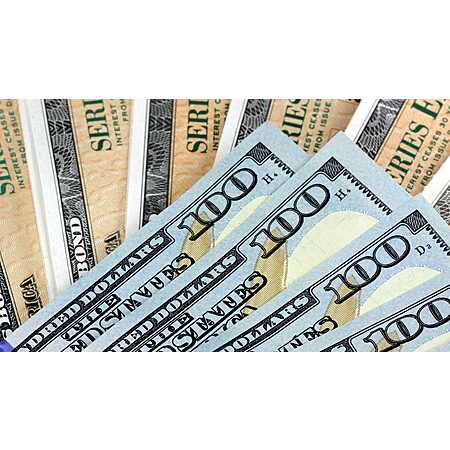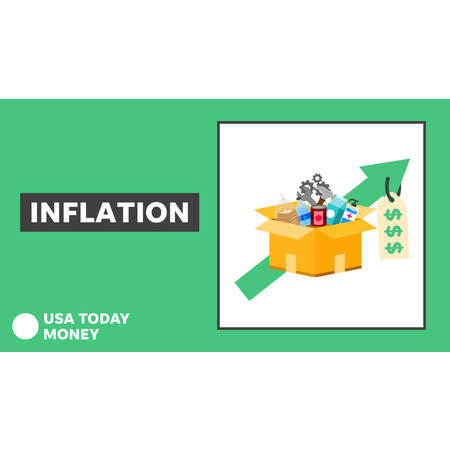Note: This popular deal is still available.
U.S, Government Treasury is currently offering
7.12% Interest Rate in combined
Fixed + Inflation Rate Earnings valid on newly issued
Series I Savings Bonds purchased from November 2021 through April 2022. Limit of $10,000 / year in interest earnings per person.
Thanks to community member
dn90003 for sharing this offer.
About this offer:- How do I buy a Series I bond?
- Must register or sign-in to your free TreasuryDirect.gov account and link a bank account.
- Click here to view a Guided Tour
- What is a Series I bond? (source)
- "A savings bond that earns interest based on combining a fixed rate and an inflation rate."
- You may use Series I bonds to:
- Save in a low-risk product that helps protect your savings from inflation
- Supplement your retirement income
- Give as a gift
- Pay for education
- Click here for more information about Series I Bonds
- What interest does a Series I bond earn? (source)
- A combination of a fixed rate that stays the same for the life of the bond and an inflation rate that is set twice a year.
- For bonds issued from November 2021 through April 2022, the combined rate is 7.12%





Leave a Comment
Top Comments
In case you're wondering, here's how the rate is computed:
Composite rate =
I bought $10k in denominations of 2,3, 5 so if I want to cash out I can do it in chunks instead of having to cash out $10k.: Better than any CD or bank rate if you want to stay in cash.
https://www.treasurydir
3,498 Comments
Sign up for a Slickdeals account to remove this ad.
I own a lot of $T (been accumulating last 2 months) because I like the WB+Discovery merger and the low value, not it's 8% dividend... People need to stop give up investment advice which they know nothing about please.
BTW you can get 16% from IEP Carl Iahn's investment company which pay 16% dividend. (double of AT&T) but please do research the company and access your own risk and understand why you want to own it not because it dish out some dividend.
I have a portfolio of stock, mutual fund, crypto, and CASH ( which include iBond) and they all have a place in my portfolio.
I'm not saying that crypto won't exist in the future or even that it's a bad move for a portfolio. What I'm saying is that no, it's not like the early internet at all. In any way, shape, or form. Using that argument is like the idiots who say stuff like "hey, it rained really hard on July 17. Climate change sucks!" Climate change is real. However, your argument for it is terribad.
You should've ended up somewhere between $350 and $550.
Sure you can say some things are similar. I can draw comparisons between crypto and ants, too. That's about as similar as crypto and the internet.
You should've ended up somewhere between $350 and $550.
Sign up for a Slickdeals account to remove this ad.
$500 * (1 + 2%) ^ 9 ~= $600 (just an estimate, nobody knows the actual value in 9 yrs)
This is the instructions from SD:
"How do I buy a Series I bond?
Must register or sign-in to your free TreasuryDirect.gov account and link a bank account.
Electronically: Online via TreasuryDirect (including through payroll direct deposit)
Paper: By mail when you file your federal tax return
Click here to view a Guided Tour"
I clicked on the Guided Tour. I have followed all the steps in the Guided Tour. My bank account has been linked to my Treasury account which has a Treasury account number created. I was able to log in to my Treasury account. The next step is how do I fund the money. Is $10k the limit one can fund? Thanks.
I guess to buy Series I Savings Bonds, click on the tab 'BuyDirect' next to 'My account' tab and enter the purchase amount max of $10k?
$500 * (1 + 2%) ^ 9 ~= $600 (just an estimate, nobody knows the actual value in 9 yrs)
Our community has rated this post as helpful. If you agree, why not thank bonkman
Math alert:
The compound interest formula is P(t) = P0*(1 + rate/n)^(nt) where the rate is given for some set time (usually a year) and n is the number of times it's compounded. t is the amount of rate periods. So for this bond, the value after t years (assuming it's constantly 7%) is <initial amount> *(1+.07/2)^(2t). In 30 years, that $100 would grow to about $788. (Again, assuming a constant 7%.) If you kept it in for 15 years, however, it would only be worth $281. Such is the power of time with compounding interest. Essentially, a 7% interest rate means that your money doubles every decade, ignoring inflation.
More math alert:
Because Euler's number "e" is the limit of (1+1/n)^n as n approaches infinity, this formula approaches P(t) = Pe^(rt), a formula you may have learned in HS algebra class. This is basically what you'd make if the interest were calculated every instant of every day. You don't actually make infinite money because the rate gets broken up into so many pieces. And if you want to go into a really deep rabbit hole, this irrational number that's used to easily estimate interest rate payouts (at least, if you have a decent calculator) rears its head in some really bizarre "different" cases -- like how likely it is to go 0-for-n when playing a game that has a fixed probability of you winning. It even shows up all the time (usually as its counterpart "natural log," or ln) in optimization problems.
Sign up for a Slickdeals account to remove this ad.
More importantly, though, is the fact that we're on SD. The enter point of this site is to hedge against inflation. I don't really care if the price of TVs goes up 5% y/y because I know I'm going to buy a FP deal that's 70% off the prices which inflation is calculated off of. And, sure, while some items, like groceries or housing, don't show up here too often, there are ways to beat inflation in those areas, too.
Leave a Comment